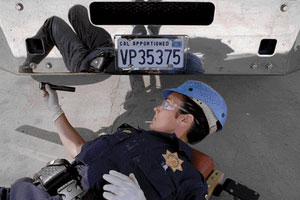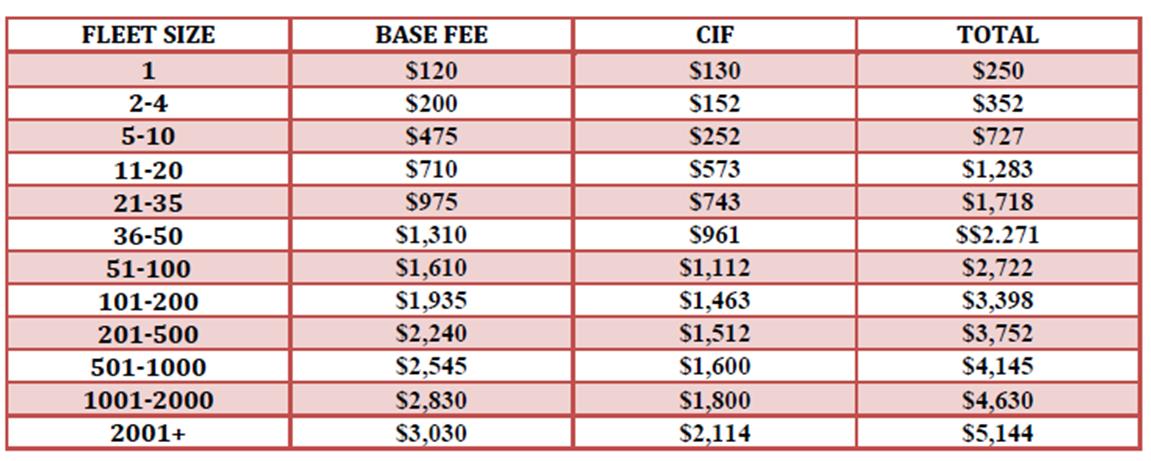“Basic” Inspection of Terminal (BIT) Program Update
Changes Take Effect January 1, 2016
Editor’s note: The WSTA has been working closely with the CHP to deliver accurate and up-to-date information regarding changes being made to the BIT Program. We will be hosting a series of workshops statewide during 2016 to assist our members understand and benefit from the changes.
On October 3, 2013 Governor Jerry Brown signed into law AB 529 that will make significant changes to the BIT program. The bill was supported by all major trucking associations in California including the Western States Trucking Association.
 AB 529 will significantly alter California’s unique Biennial Inspection of Terminal (BIT) program and how motor carriers are prioritized for a terminal inspection. For starters, the program will be renamed the Basic Inspection of Terminal program. Biennial is being dropped from the name.
AB 529 will significantly alter California’s unique Biennial Inspection of Terminal (BIT) program and how motor carriers are prioritized for a terminal inspection. For starters, the program will be renamed the Basic Inspection of Terminal program. Biennial is being dropped from the name.
The intent behind reforming the BIT program is to allow CHP to more closely target its limited human resources (inspectors) and focus on unsafe motor carriers including expanding the program to ALL motor carriers in the state that operate commercial motor vehicles (CMV’s). Bluntly, if you’ve always received a satisfactory terminal rating, chances are you will always get a satisfactory rating so why should you continually face a terminal inspection? You won’t as long as your crash history and safety data from all inspections indicates good safety management practices are in-place.
Some of the key changes to BIT include:
- Every motor carrier in the state that did not have a U.S. DOT number has now been assigned one. Motor carriers can display either their CA number or U.S. DOT number or both on their vehicles.
- The assignment of the U.S. DOT number will allow CHP to upload all vehicle, terminal, and carrier inspections conducted on a motor carrier into the Federal Motor Carrier Safety Administration (FMCSA) Safety Measurement System (SMS). This system populates carrier information and safety data in what is termed the CSA – Compliance, Safety, Accountability SMS.
- CHP will utilize the safety data uploaded into FMCSA’s SMS to prioritize Terminal Inspections. AB 529 allows CHP the discretion not to inspect a terminal more often than one time every six years. Clean roadside inspections and no crash history are important factors in whether CHP decides to schedule a Terminal Inspection – this turns the BIT program into a “performance based program” where on-highway behavior becomes the determinant in scheduling a Terminal Inspection.
- Expands significantly the number of motor carriers required to enroll in the BIT program.
Simply, any motor carrier operating a CMV (a CMV is defined as 10,001 pounds or greater) subject to regulation by the California Public Utilities Commission, the Federal Motor Carrier Safety Administration, or the California Department of Motor Vehicles will need to be enrolled in BIT. Historically, most operators of trucks under 26,001 pounds were exempt from BIT. Not after 1/1/2016.
Fleets operating CMV’s in commercial use of 10,001 pounds GVWR or more also means those vehicles not previously required to have 90-BIT inspections will need to comply with all inspection requirements.
- Leased equipment. Currently, when a vehicle is leased to a motor carrier for a period of four months or less, the registered owner (lessor) is responsible for it under BIT, including presenting the vehicle for inspection, and all maintenance and maintenance records requirements. The new Basic Inspection of Terminals program will end that practice and motor carrier (lessee) will be responsible on day one.
- CHP will no longer collect BIT fees.
BIT fees will be paid to DMV at the time of obtaining a new or renewing an existing motor carrier permit (MCP). For motor carriers that possess a non-expiring MCP, they will no longer pay BIT fees since there is no annual renewal for a non-expiring MCP (as long as you keep current with paying annual Unified Carrier Registration fees).
Also, there will no longer be a separate BIT application to complete for new carrier operations. You will be automatically enrolled in BIT during payment of your MCP fee. The BIT fee will be called a “Carrier Inspection Fee” or “CIT” on your MCP renewal form.

Fee chart: MCP/CIF fee chart that applies to “for-hire” motor carriers. Private fleets have a lower MCP base fee.
This post is also available in: Spanish



